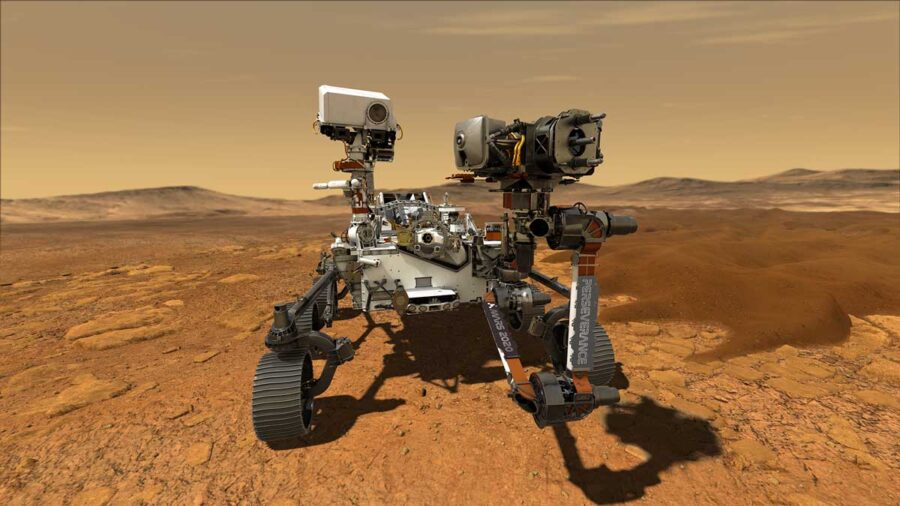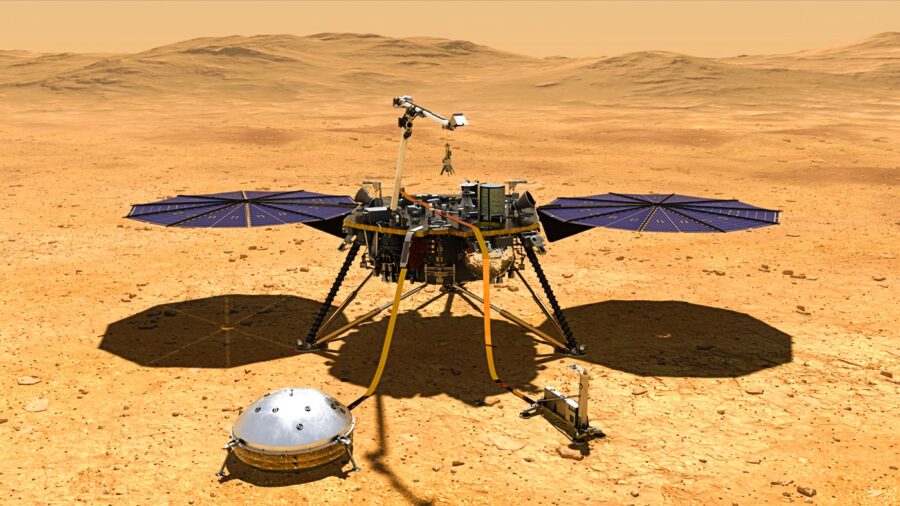NASA Rover Just Collected Samples For Proof Of Ancient Life On Mars
NASA's Perseverance rover has created the first soil deposit on Mars and now comes the hardest part: getting it back home.

NASA’s Perseverance rover just achieved a first for humanity by establishing a soil sample depot on Mars. This is a back-up plan incase Perseverance can’t get its onboard samples to a lander for retrieval back to Earth. Amazingly, if the samples make it back to Earth, it will be the first confirmed Martian material on our planet.
The Jezero Crater was selected as the location to extract soil samples because of the belief that it may have harbored ancient life. Dried river beds appear to cover the surface of the crater giving hope that water once flowed through the region. NASA’s rover is now embarking on an eight month mission to the neighboring Delta Top territory to investigate the potential mouth of the ancient riverbed.
NASA’s mission has now changed to focus on retrieving the rover’s soil samples. As anyone that has watched The Martian knows, getting off of the Red Planet is very difficult. The process is significantly more involved than the engineering behind the lunar lander and has to be possible with the direct involvement of human pilots.
To date, all of NASA’s probes and rovers that have landed on Mars are still on the surface. While our understanding of our closest neighbor in the Milky Way has grown by leaps and bounds in the last decade, bringing samples back to Earth will dramatically alter how we view Mars. Testing rocks, dirt, and once fertile soil within the atmosphere of Earth can lead to unimaginable scientific breakthroughs.
That dream is dependent on NASA getting the Perseverance rover’s precious cargo off of the planet. Lockheed Martin has started work on a Mars Ascent Vehicle (MAV) while the European Space Agency is developing a spacecraft capable of transporting the cargo back to Earth. Thanks to the extreme distances in space it will take the mission a decade to be completed.

Within five years, hopefully, a Mars lander and MAV can be on the surface of the Red Planet. Getting back would take another five years, meaning that samples collected over the last few weeks can’t be on Earth until 2033 at the earliest. NASA’s latest rover landed in the Jezero Crater two years ago and should, again ideally, be fully functional when its return trip home finally arrives.
NASA’s Perseverance rover has 17 samples on board, with 10 buried within titanium tubes in the ground of the Jezero Crater. If, for whatever reason, the rover is unable to be retrieved, helicopter drones can collect the soil samples. At that point the issue will then become collecting the drones from the surface of Mars.
The Mars 2020 Mission has been the most successful expedition to Mars in the history of our species. NASA still faces immense technological hurdles in reclaiming its rover and the priceless Martian soil, but it’s possible, for the very first time, to bring material from another planet to Earth. Studying and testing of the samples in a laboratory on Earth gives us our best possible chance at discovering life beyond the third rock from the Sun.












